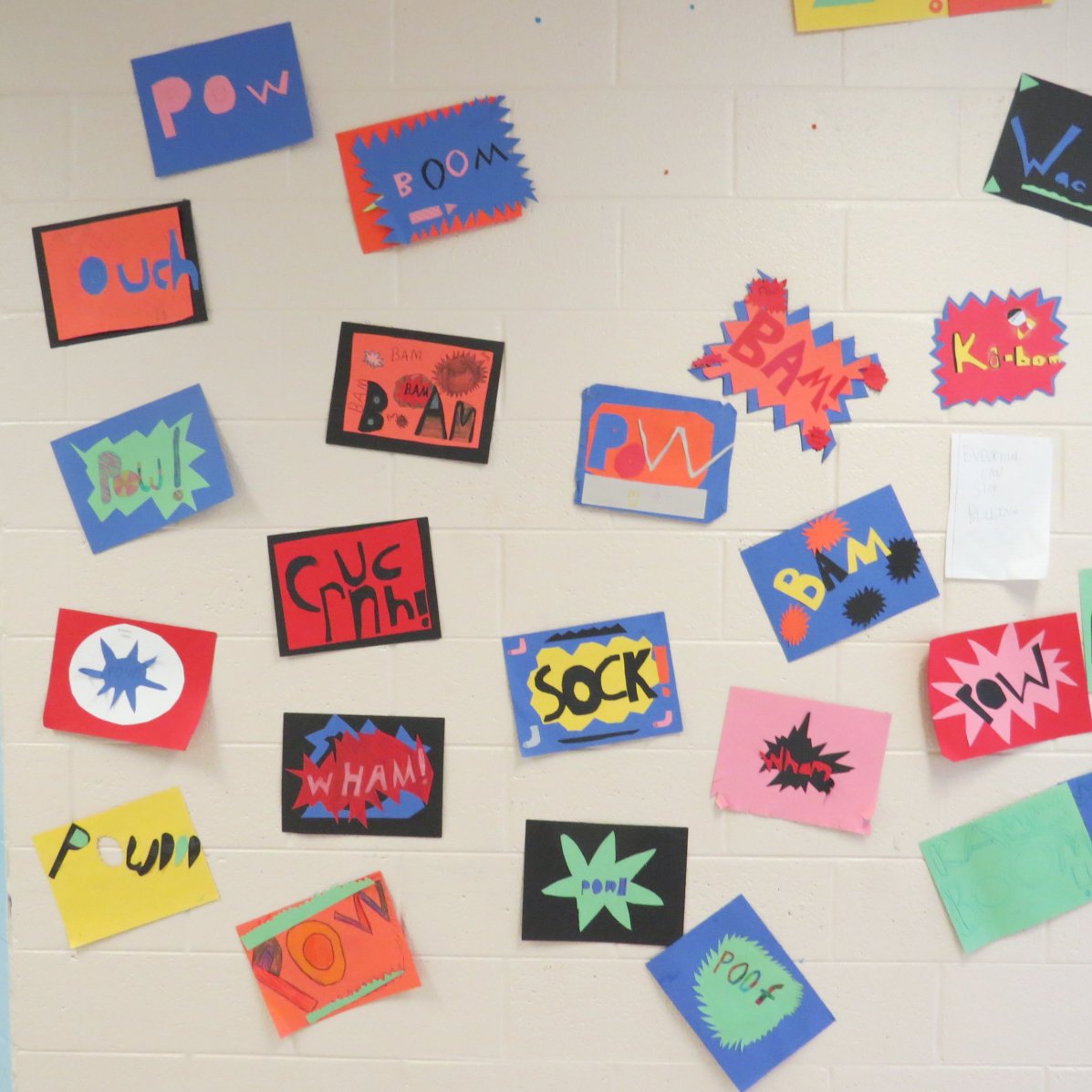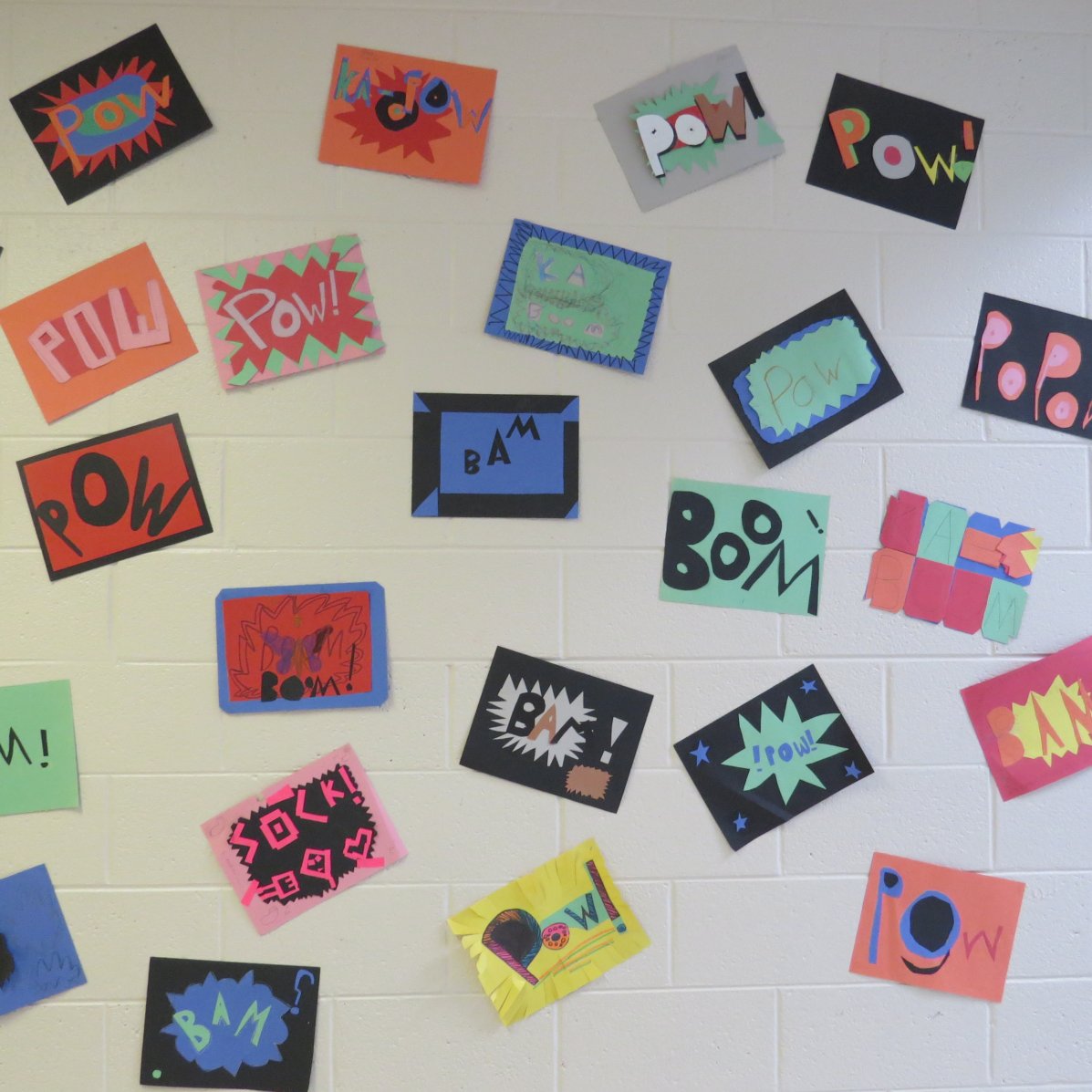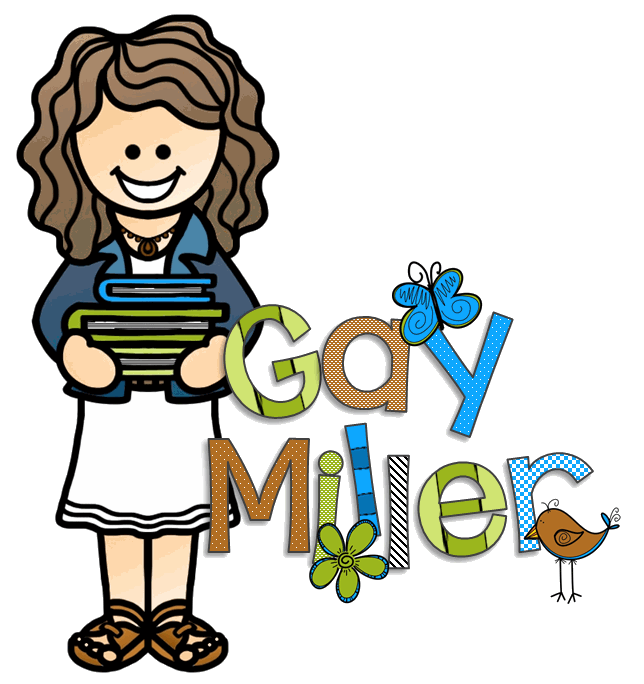
Let’s talk sound devices. You know—the pop, buzz, and bam that make language come alive. If you’re like me, you’ve probably tried to explain onomatopoeia or alliteration while students stare blankly… until someone blurts out, “Wait—isn’t that like in Batman when it says KAPOW?”
Exactly.
I decided to go for it and put together some fun, interactive lessons to help 4th and 5th-graders get the hang of sound devices while actually having a good time with them.
Whether you’re prepping for an observation (been there!) or just want to spice up your ELA block, this mini-unit is packed with activities your students will love. The activities are standards-aligned and hit all the right notes (literally).
Why Two Versions?
The lessons come in two PowerPoint versions. They cover slightly different skills because of the teaching standards I was using..
- 4th Grade: Alliteration + Rhyme
- 5th Grade: Alliteration + Onomatopoeia
Back when I was being observed and had no clue when the person completing the observation would walk into the classroom, so I prepared a lesson for every class. #TeacherPreparedness
Why Two Versions?
The lessons come in two PowerPoint versions. They cover slightly different skills because of the teaching standards I was using..
- 4th Grade: Alliteration + Rhyme
- 5th Grade: Alliteration + Onomatopoeia
Back when I was being observed and had no clue when the person completing the observation would walk into the classroom, so I prepared a lesson for every class. #TeacherPreparedness
First Things First: What Are Sound Devices?
Here’s a quick refresher before we dive in:
- Alliteration: repeating the same starting sound – Think “Sally sells seashells” or “wild winds whisked willows.”
- Rhyme: matching end sounds – classic poetry vibes. “Twinkle, twinkle, little star…”
- Onomatopoeia: words that sound like what they describe – Buzz, boom, crash—you get the idea.
Students will hear the difference (pun absolutely intended) and start noticing sound devices in everything from poems to commercials to pop songs.
Here’s What’s Included
Each PowerPoint lesson walks students through:
- a fun hook (think catchy commercials and classic Batman clips)
- clear learning goals
- essential questions
- standards alignment
- built-in assessments
- activities that hit every level of Bloom’s Taxonomy—from remembering to creating
Best of all, the lessons are easy to follow and super adaptable, whether you’re teaching whole-group, small-group, or trying to keep 27 squirrelly kids focused on a rainy Friday afternoon.
Alliteration, Rhyme, and Onomatopoeia Activities
Activity #1: Sound Devices Organizers

For the first activity, students complete a graphic organizer to deepen their understanding of sound devices. Three versions of each organizer are provided to accommodate different learning needs.
- Left side: Write definitions for the sound devices (easy recall)
- Right side: Create original examples—like their own tongue twisters or silly rhymes
The organizers are included in the handout.
Activity 2: Text Detective Time

The PowerPoint includes slides with lines from literature, famous speeches, and songs to identify onomatopoeia or alliteration. They initially use pinch cards to show their answers and later write them down.
It’s great practice for finding and explaining literary devices in context.
Activity 3: Group Game – Find That Sound!
Turn your classroom into a sound device showdown:
- Students are divided into small groups to participate in a game.
- Play a song (suggestions: “Rocky Top,” “Splish Splash,” “The Trolley Song”)
- Students work in teams to find as many examples of rhyme and alliteration as they can.
- Random teammates share their findings—points for correct answers!
Warning: This gets loud and competitive. And it’s a total blast.



Activity 4: RAFT Writing – With a Twist
Give students real-world roles and have them create using rhyme or alliteration:
- Advertiser: Create a jingle or slogan for a commercial.
- Muralist: Design a mural for a downtown building.
- Campaign Manager: Develop a campaign slogan.
- Marketing: Design packaging for a product targeting young consumers.
They can choose their format (poster, booklet, digital slide, etc.) and get creative. Perfect for centers or group work!
Activity 5: Batman-Inspired Onomatopoeia Art
For your 5th graders (or just your art-lovers), this one’s a hit.
- Watch a clip from the 1960s Batman show and point out the BAM! WHACK! ZOOM!
- Introduce Roy Lichtenstein’s pop art.
- Have students make their own onomatopoeia art using construction paper and markers.
These make fantastic bulletin board displays. Colorful, fun, and full of learning.


Wrap-Up: Exit Reflections
At the end of the unit, hand out ads or poems and have students identify which sound devices are used. They’ll write a quick reflection on how effective the device was—and share with a partner or the class.
It’s a low-stress way to review and check for understanding.
Ready to Rock and Rhyme?
Teaching sound devices doesn’t have to be dry or textbook-y.
“Sound is the secret superhero of language—it sneaks into your brain and makes words unforgettable.”
— Probably Shakespeare, or maybe Batman. Hard to say.
Check out the entire series on figurative language.
See the product that inspired this post.
If you are looking for more figurative language teaching ideas, check out my Figurative Language Unit on TPT.






3 comments
Very descriptive post, I liked that a lot. Will there be a part 2?
bookmarked!!, I like your website!
Really great post! Keep up the great work. I’ll be back to read more!
🙂